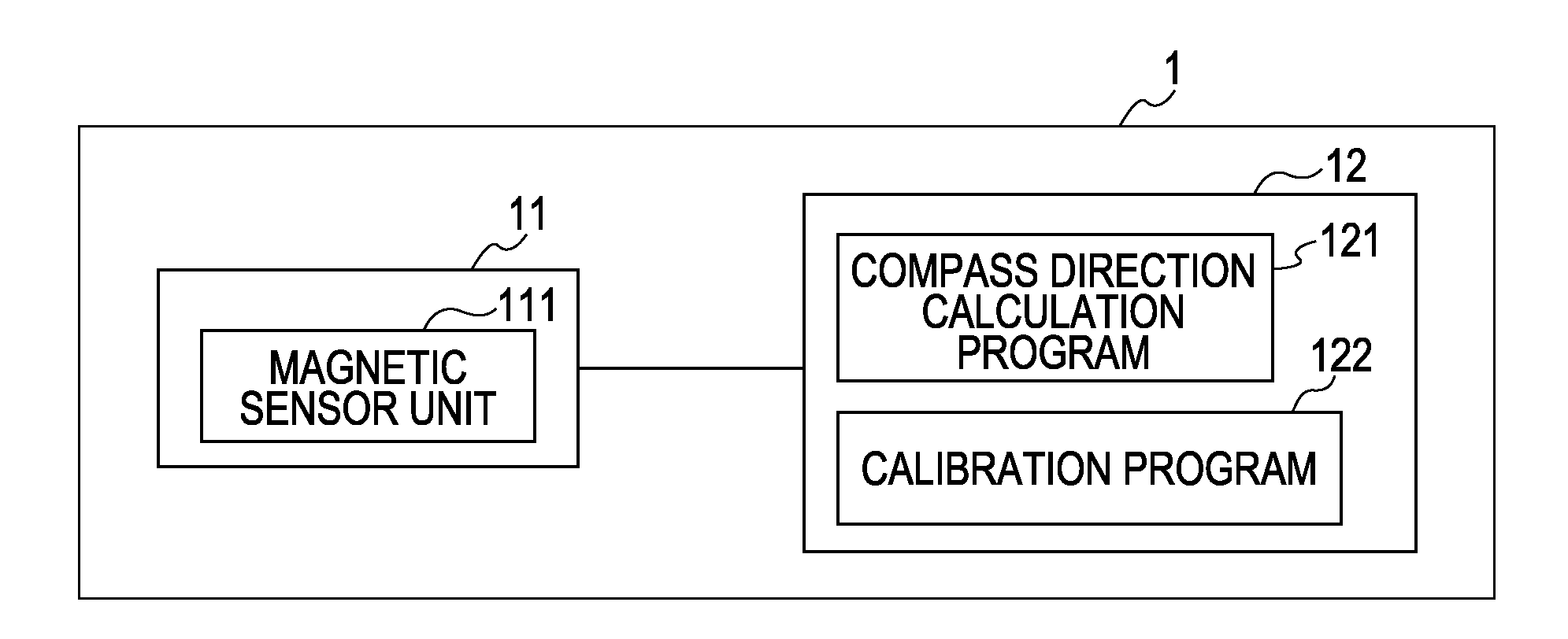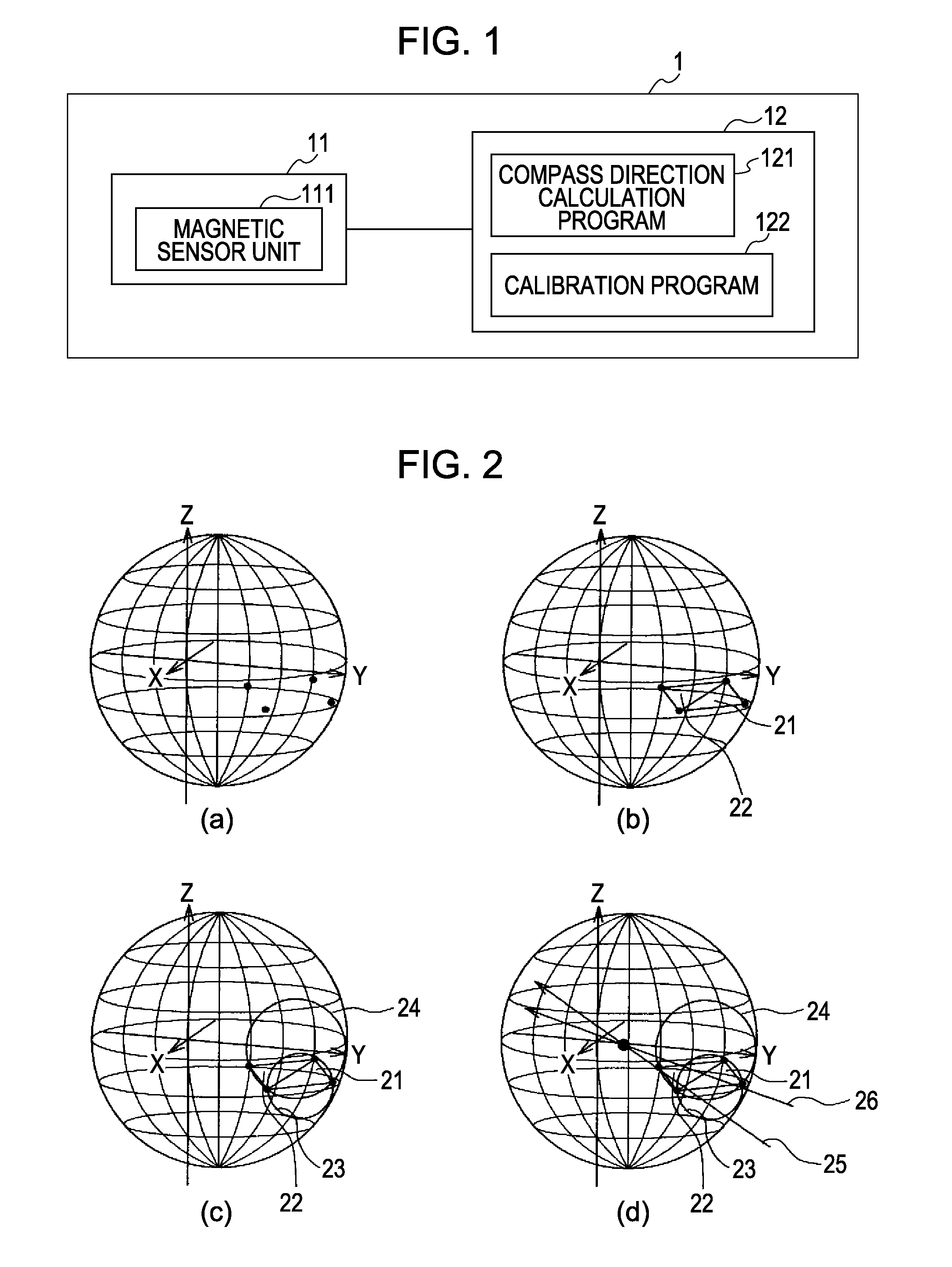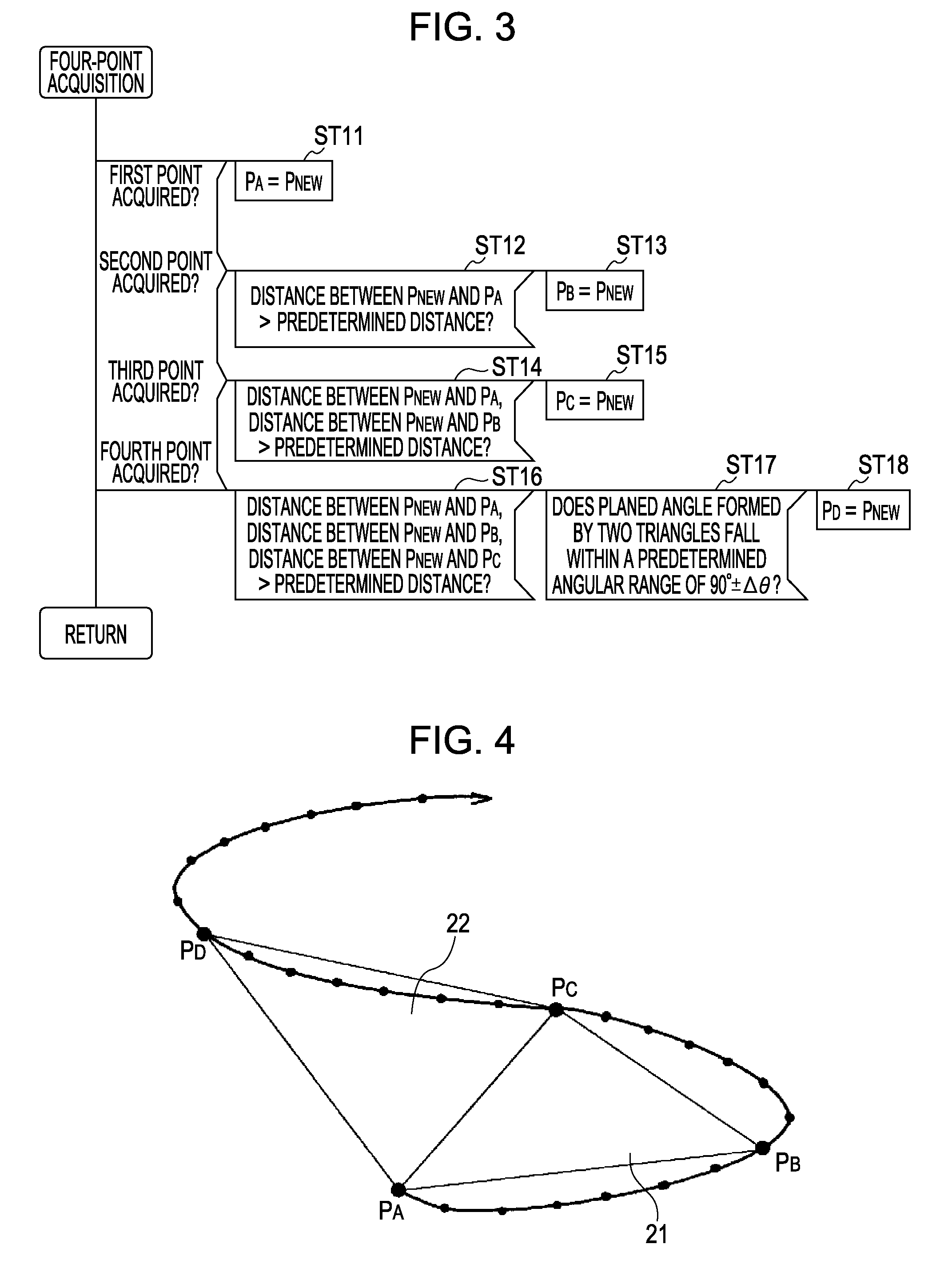Calibration program and electronic compass
- Summary
- Abstract
- Description
- Claims
- Application Information
AI Technical Summary
Benefits of technology
Problems solved by technology
Method used
Image
Examples
Embodiment Construction
[0027]With reference to the accompanying drawings, an exemplary embodiment of the present invention is explained in detail below.
[0028]FIG. 1 is a block diagram that schematically illustrates an example of the configuration of an electronic compass according to an exemplary embodiment of the present invention. An electronic compass 1 shown in FIG. 1 is mainly made up of a compass module 11 and a controlling unit 12. The compass module 11 is provided with a magnetic sensor unit 111. The controlling unit 12 is provided with a compass direction calculation program 121 and a calibration program 122. The compass direction calculation program 121 calculates a compass bearing with the use of an output of the magnetic sensor unit 111. The calibration program 122 calculates a reference point for the output of a magnetic sensor with the use of the output of the magnetic sensor unit 111. In addition thereto, the controlling unit 12 is further provided with a plurality of buffers that can store...
PUM
 Login to View More
Login to View More Abstract
Description
Claims
Application Information
 Login to View More
Login to View More - R&D
- Intellectual Property
- Life Sciences
- Materials
- Tech Scout
- Unparalleled Data Quality
- Higher Quality Content
- 60% Fewer Hallucinations
Browse by: Latest US Patents, China's latest patents, Technical Efficacy Thesaurus, Application Domain, Technology Topic, Popular Technical Reports.
© 2025 PatSnap. All rights reserved.Legal|Privacy policy|Modern Slavery Act Transparency Statement|Sitemap|About US| Contact US: help@patsnap.com



